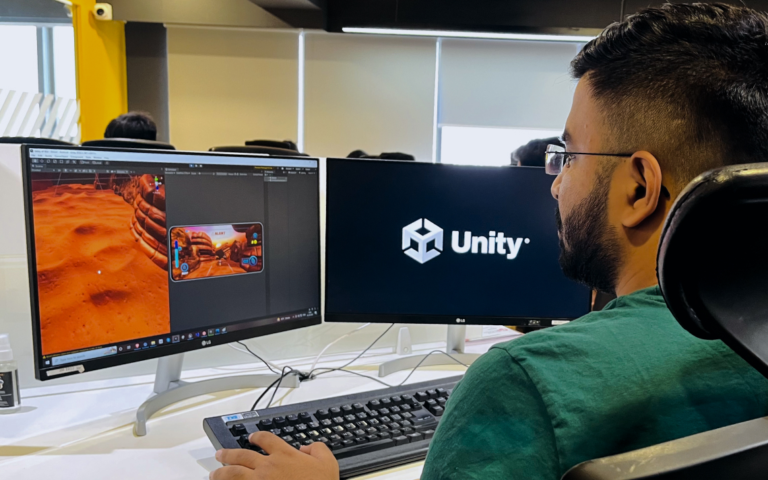Revit BIM Modelling: A Powerful Tool for Construction Professionals
Revit BIM (Building Information Modelling) has revolutionised the construction industry by streamlining workflows and enhancing collaboration. As a construction professional, staying ahead of technological trends is crucial, and Revit is one of the tools that can give you a competitive edge. It enables you to create precise, data-rich 3D models, transforming the way you design, plan, and execute projects.
BIM Associates Revit BIM modelling solutions help construction professionals harness these advantages for more efficient project management. Whether you’re an architect, contractor, or engineer, Revit helps bridge the gap between various project stakeholders. The tool enables seamless coordination across teams, enhancing communication and minimising costly errors. With Revit, project management becomes more efficient, reducing time spent on rework and improving overall project delivery.
In this article, we will explore how Revit BIM modelling can enhance your construction processes. You will gain insights into its capabilities, its impact on project collaboration, and how it can help you deliver more accurate and cost-effective construction projects.
What is Revit BIM Modelling?
Revit is a powerful, industry-standard BIM tool used by construction professionals to design, visualise, and manage building projects. Unlike traditional 2D drafting methods, Revit allows for 3D modelling that is rich with data. This means that every component within the model—walls, windows, doors, plumbing, electrical systems—contains detailed information that can be used throughout the project lifecycle.
The key strength of Revit is its ability to generate models that are not just visually accurate but also smart. These models respond to changes in real time, meaning any adjustments made to the design will automatically update throughout the entire model. This functionality can save you a great deal of time, reduce errors, and improve the overall quality of your project.
Benefits of Using Revit BIM Modelling in Construction
Revit BIM modelling streamlines the construction process by improving collaboration and accuracy across teams. It helps reduce errors, saves time, and enhances project efficiency from design to execution. Here are some of the key benefits of using Revit BIM modelling in construction:
1. Enhanced Collaboration
One of the biggest challenges in construction projects is the lack of coordination among different teams. Revit’s collaborative features address this issue by allowing architects, engineers, and contractors to work in the same digital space. With Revit, everyone involved in the project can access the same model, ensuring that the latest design changes are reflected across all disciplines.
For example, if an architect changes the placement of a window, the structural engineer, mechanical, electrical, and plumbing teams will immediately see those changes reflected in their own versions of the model. This creates a unified approach to project execution.
2. Real-Time Modifications
Revit’s real-time updating capabilities are a game changer for construction professionals. Any modification made to the model is instantly visible to all users working on the project. This prevents discrepancies between different teams and ensures that everyone is working with the most current information.
For instance, if a change is made to the dimensions of a room, the software automatically adjusts the associated components, such as walls, doors, and windows. This eliminates the need for manual updates, reduces the potential for human error, and ensures that the model remains consistent across all teams.
3. Improved Accuracy and Reduced Errors
Accuracy is critical in construction, and Revit helps minimise errors by ensuring that your designs are based on precise, data-driven models. The software checks for clashes between different systems within the building, such as plumbing and electrical wiring, before construction begins. This clash detection allows you to identify and resolve conflicts early in the design process, preventing costly issues on the job site.
Additionally, Revit’s intelligent components automatically adjust to changes, eliminating the need for manual dimension calculations or plan updates. This level of precision ensures that your design is as accurate as possible, reducing rework and delays during construction.
4. Cost and Time Savings
Revit helps you optimise both time and budget. With its automated tools, you can streamline tasks that would typically require manual input, such as generating materials lists and scheduling. The software can also analyse and calculate the costs associated with different materials and components, helping you make informed decisions during the design phase.
By catching errors early and facilitating better project planning, Revit reduces the likelihood of delays and budget overruns. This can lead to significant savings throughout the project’s lifecycle. Moreover, the ability to visualise the entire building in 3D before construction begins enables better planning and more efficient resource allocation.
Key Features of Revit BIM Modelling
Revit BIM modelling offers advanced features that streamline design, enhance collaboration, and ensure accuracy throughout the project lifecycle. These tools help construction professionals deliver high-quality, efficient, and cost-effective projects. Here are some key features of Revit BIM modelling that can transform the way you approach construction projects.
1. 3D Visualisation and Design
Revit’s 3D modelling capabilities allow you to visualise every aspect of the project in detail. Unlike traditional 2D blueprints, Revit’s 3D models give you a more accurate representation of the final product. This helps you identify potential issues in the design phase, making it easier to spot errors before construction begins.
The 3D models also allow you to simulate how the building will look in different lighting conditions, how systems will function together, and how the space will be utilised. This makes it easier to communicate your vision to clients, contractors, and other stakeholders.
2. Clash Detection
Clash detection is a crucial feature in Revit that helps you find and resolve conflicts between different building systems. Whether it’s plumbing, electrical, or structural elements, Revit automatically checks for clashes and alerts you to potential issues. This feature helps reduce costly errors and prevents delays by allowing you to address problems before they arise on the construction site.
3. BIM Coordination
Revit’s BIM coordination tools allow multiple team members to work on the same project simultaneously, each contributing their expertise. These tools ensure that all elements of the project are aligned and compatible. Whether it’s architectural, structural, or MEP (mechanical, electrical, and plumbing) work, BIM coordination ensures that all systems integrate seamlessly, reducing the risk of miscommunication.
4. Automated Scheduling
With Revit, you can automate the scheduling of tasks, ensuring that your project stays on track. The software can create detailed schedules based on the project’s progress and automatically adjust them as changes are made to the model. This functionality helps you keep track of milestones and ensures that deadlines are met.
How Revit Improves Project Delivery
Revit enhances project delivery by streamlining communication, ensuring that all teams have access to accurate and up-to-date models. It reduces rework and ensures quality by identifying issues early, minimising costly delays.
1. Streamlining Communication
Communication is key to successful project delivery, and Revit facilitates better communication among all parties involved in the project. By providing a single source of truth—the model—Revit ensures that everyone has access to the same information. This reduces the likelihood of miscommunication and enables teams to work more efficiently.
2. Reducing Rework
Rework is one of the most significant causes of delays and cost overruns in construction projects. Revit helps prevent rework by allowing teams to identify and resolve issues early in the design process. Since the software provides accurate, data-driven models, the likelihood of mistakes during construction is minimised, leading to smoother project delivery.
3. Ensuring Quality
Quality is crucial in the construction industry, and Revit helps maintain high standards throughout the project. With its clash detection, real-time updates, and intelligent modelling, the software ensures that the design is implemented correctly and according to the project’s specifications. This attention to detail enables the delivery of high-quality buildings that meet both client expectations and regulatory requirements.
Conclusion
Revit BIM modelling has proven to be a game-changer for construction professionals, offering a powerful tool that enhances collaboration, accuracy, and efficiency. By enabling seamless communication, real-time updates, and precise modelling, it ensures that your projects are completed on time and within budget. Whether you’re designing a new building, renovating an existing structure, or managing a large construction project, Revit can help you achieve your goals more effectively.
BIM Associates Revit BIM modelling solutions can further streamline your project processes, ensuring the highest level of precision and coordination across all stages. By adopting Revit BIM modelling, you position yourself to deliver higher-quality, cost-effective, and timely projects, making it a valuable asset for any construction professional. Embrace the power of BIM and take your construction projects to the next level.







